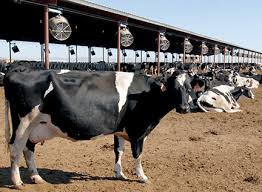Zim raw milk production jumps 18pc to 86m litres
Zimbabwe’s raw milk production rose by 18 percent to 85,05 million litres in the first nine months of 2024 compared to 71,91 million litres achieved in the same period last year despite the effects of drought, latest data shows.
A key factor contributing to this improvement has been the partnership between the Zimbabwean Government and the European Union-funded project, Transforming the Zimbabwe Dairy Value Chain for the Future (TranZDVC).
This initiative has been instrumental in supporting small-scale dairy farmers across the country, providing them with crucial resources such as calves and lucerne grass seeds.
These efforts aim to enhance production efficiency and sustainability within the dairy sector.
Lucerne, also known as alfalfa, has played a pivotal role in these advancements. This high-protein forage crop boasts a protein concentration of 18-22 percent of dry matter, significantly higher than maize silage (8 percent) and good-quality grass silage (14 percent).
The introduction of lucerne has not only improved the nutritional quality of dairy feed but also helped reduce production costs.
According to the Ministry of Lands, Agriculture, Fisheries, Water, and Rural Development, the cost of milk has been lowered to about 50 cents per litre, down from up to 70 cents per litre previously.
Dr Edson Chifamba, an international dairy expert, highlighted the benefits of lucerne, particularly its cost-effectiveness and adaptability to drought conditions.
“Medium and large-scale dairy farmers in Zimbabwe have been using lucerne for a while now. However, the uptake by small-scale farmers is currently growing at an exponential rate. This is because lucerne has proved to reduce milk production costs significantly,” he stated.
Lucerne’s deep-rooted system makes it particularly resilient to drought, providing a reliable pasture option even during dry spells. This characteristic has been invaluable during the current El Niño conditions, which have caused other fodder crops, particularly cereals, to struggle.
Despite the challenges of quantifying the exact tonnage of lucerne produced, Dr Chifamba noted that the crop’s resilience has been a crucial factor in maintaining milk production levels.
“In the last season, a lot of farmers grew lucerne in Zimbabwe. Unfortunately, the actual statistic of lucerne tonnage produced has not been quantified. Although the drought was severe, lucerne was not as affected as other fodder crops,” he explained.
Looking ahead, Zimbabwe’s dairy sector has set a milk production target of 113 million litres for 2024, with plans to increase this figure to 150 million litres by 2025. Achieving these targets will require continued investment in livestock additions and enhancements in milk productivity per cow per day.
The progress made so far underscores the importance of strategic partnerships and innovations in feed management, setting a positive trajectory for the future of Zimbabwe’s dairy industry amidst challenging environmental conditions.-herald











